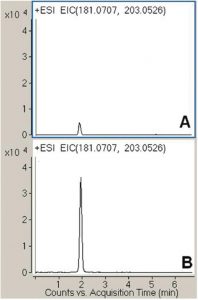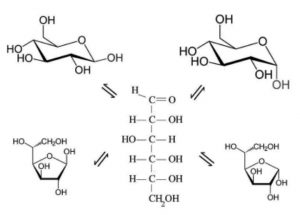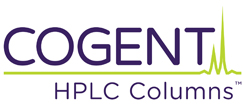Improved Signal to Noise for Glucose with LCMS
Glucose, a simple monosaccharide, was analyzed by LCMS and the peak is very symmetrical and easy to integrate. This application note illustrates the importance in the addition of Micro Molar amount of Sodium to the Mobile Phase when sugars are analyzed.
Sodium adducts of sugars produce much better signal in LCMS analysis (at least 10 times higher signal for the same sample) – see chromatograms A and B.


Peak:
Glucose 10 ppm, m/z 203.0526 (M+Na)+
Method Conditions
Column: Cogent Diamond Hydride™, 4μm, 100Å
Catalog No.: 70000-15P-2
Dimensions: 2.1 x 150mm
Mobile Phase:
—Figure A:
—A: 80% DI Water / 20% Methanol / 0.1% Formic Acid
—B: 100% Acetonitrile + 0.2% Acetic Acid
—Figure B:
—A: 80% DI Water / 20% Methanol / 0.1% Formic Acid / 100 µM Sodium Acetate
—B: 100% Acetonitrile / 0.2% Acetic Acid
ATTENTION: Sodium Acetate concentration is in MicroM. Higher concentration is harmful for MS.
Gradient:
| Time (minutes) | %B |
| 0 | 100 |
| 1 | 100 |
| 4 | 50 |
| 7 | 50 |
| 8 | 100 |
Post Time: 5 minutes
Flow rate: 0.600mL /minute
Detection: ESI – pos – Agilent 6210 MSD TOF Mass Spectrometer
Injection vol.: 1μL
Note: This method may be useful for determination of monosaccharides in blood. Samples used are un-derivatized with detection possible with mass spectrometry. Biological sample preparation is simple, generally focused on the removal of proteins and other high molecular weight components of plasma, urine, and saliva.
Attachment
No 115 Effect of Sodium Acetate for Glucose Ionization in LCMS pdf 0.2 Mb Download File


